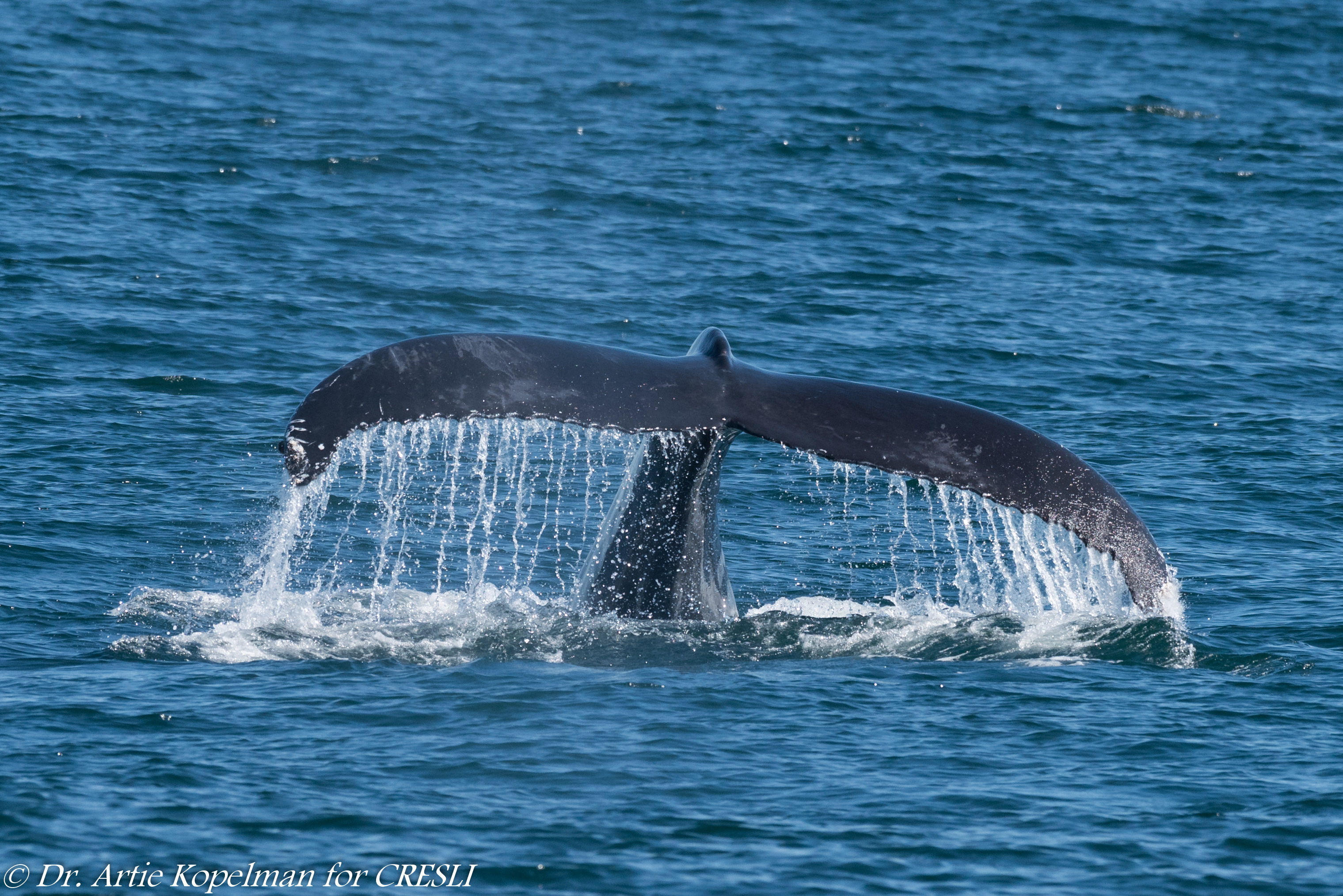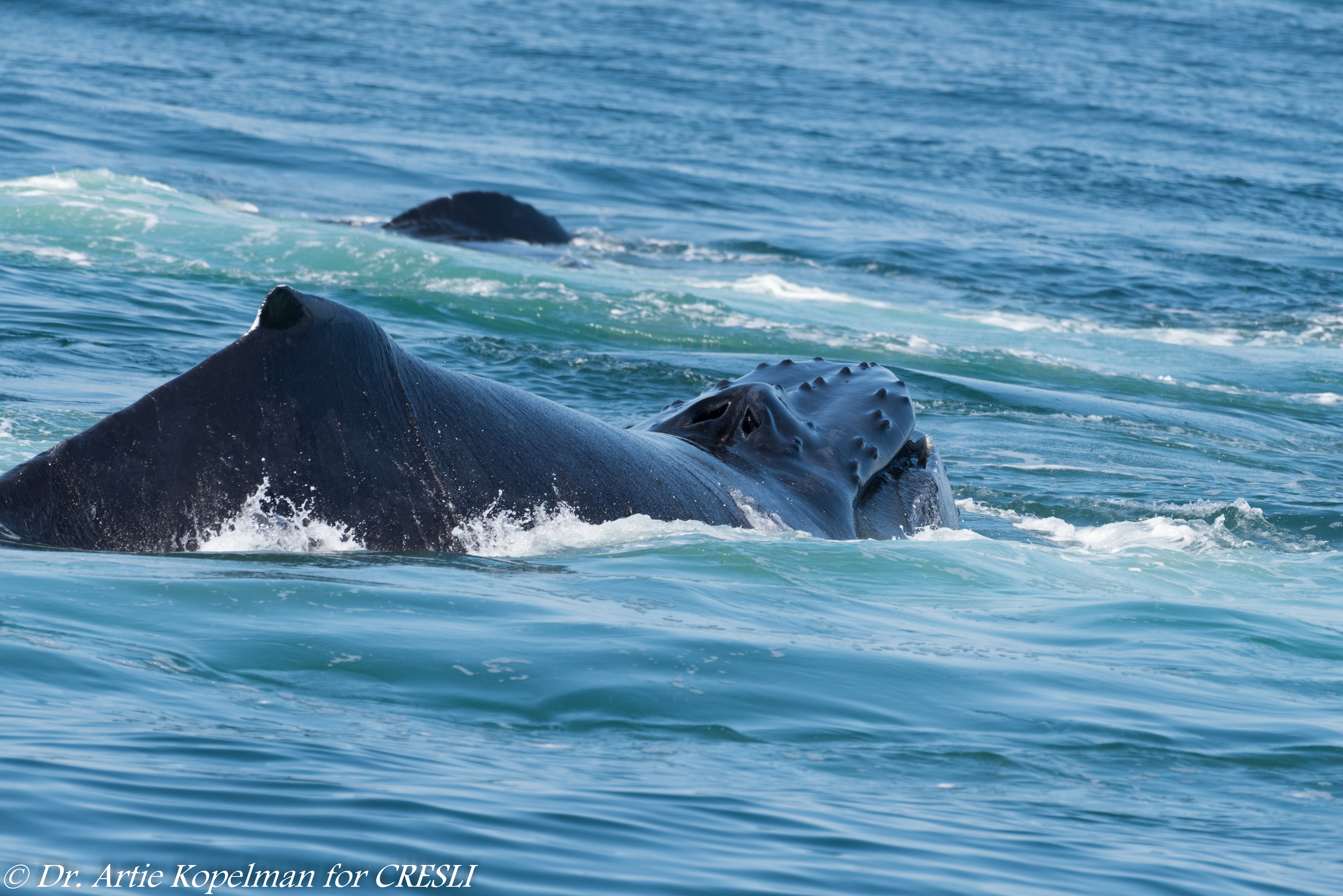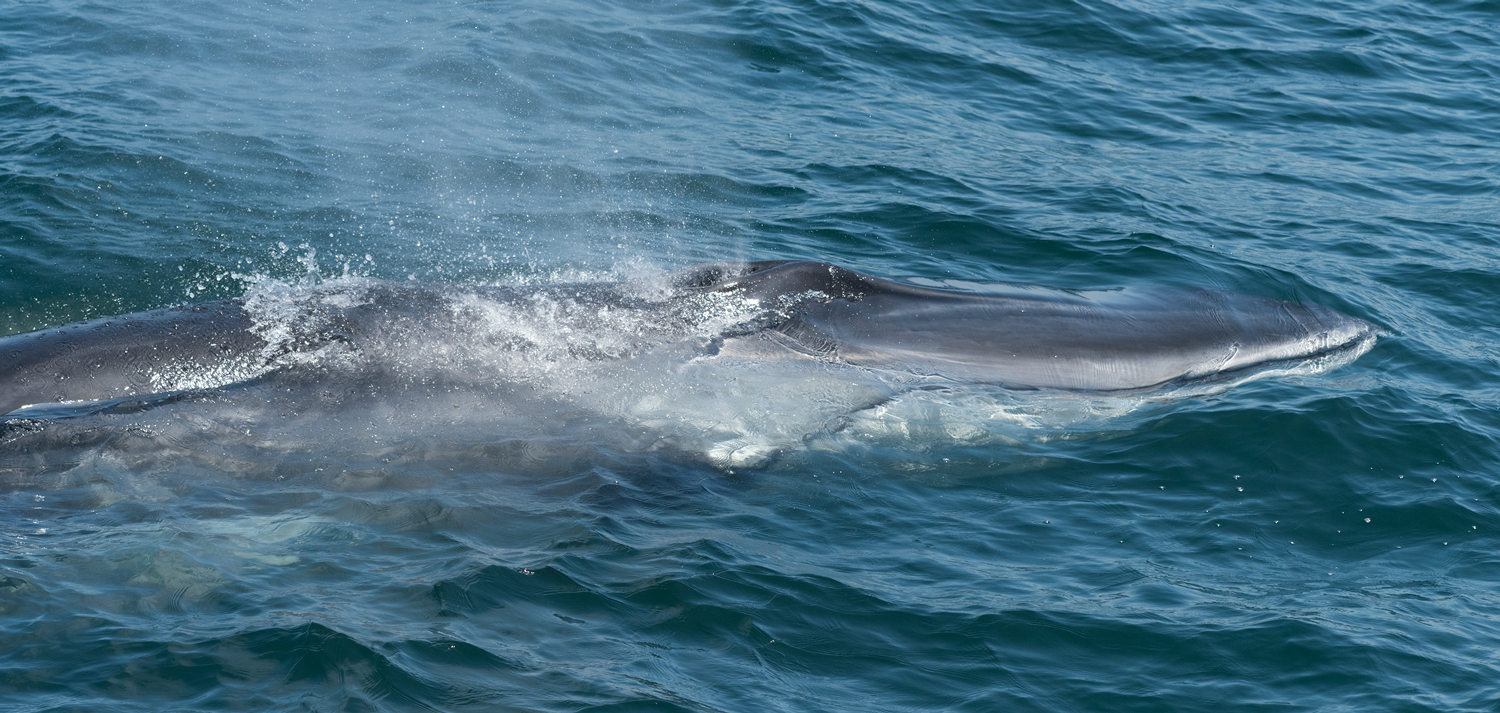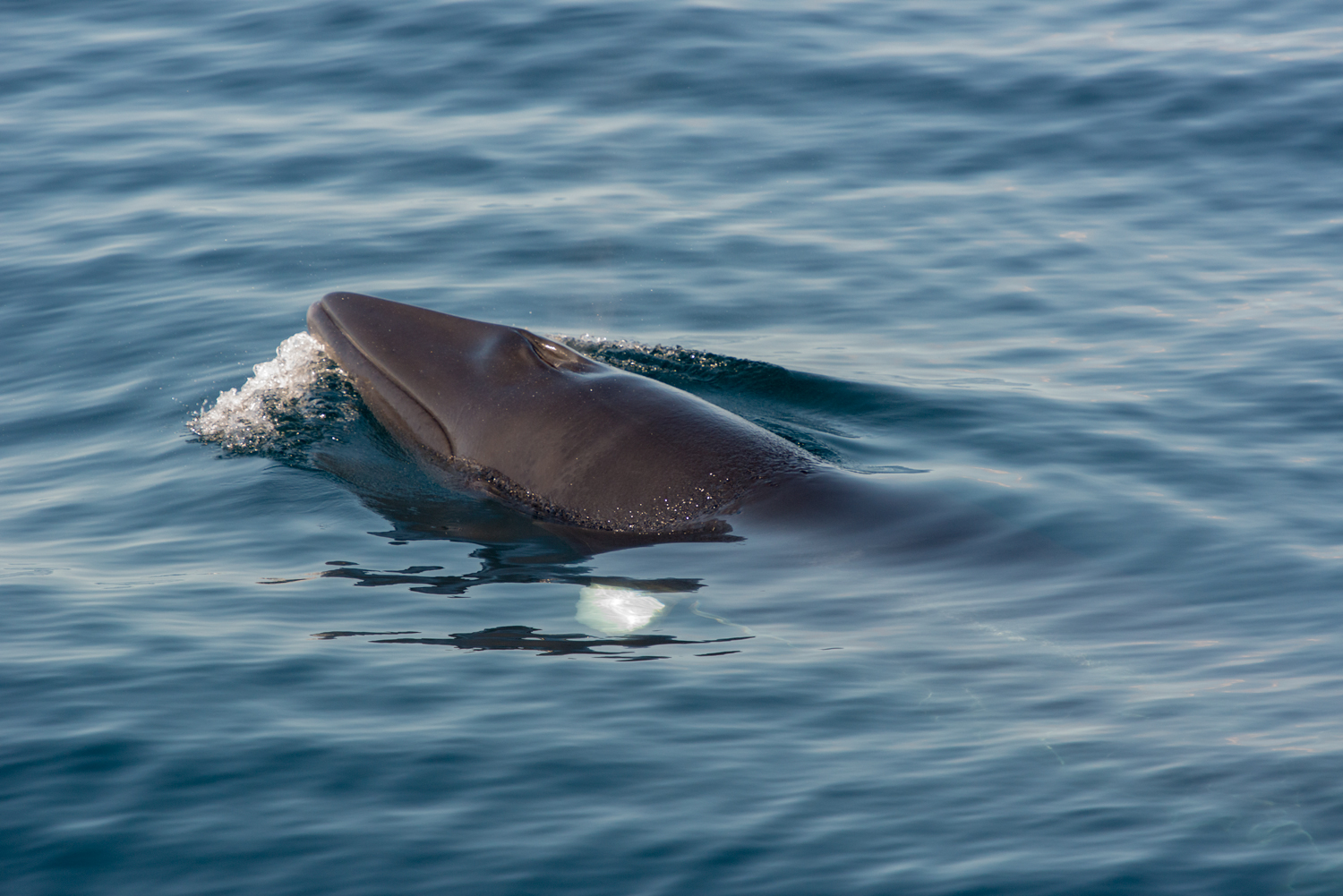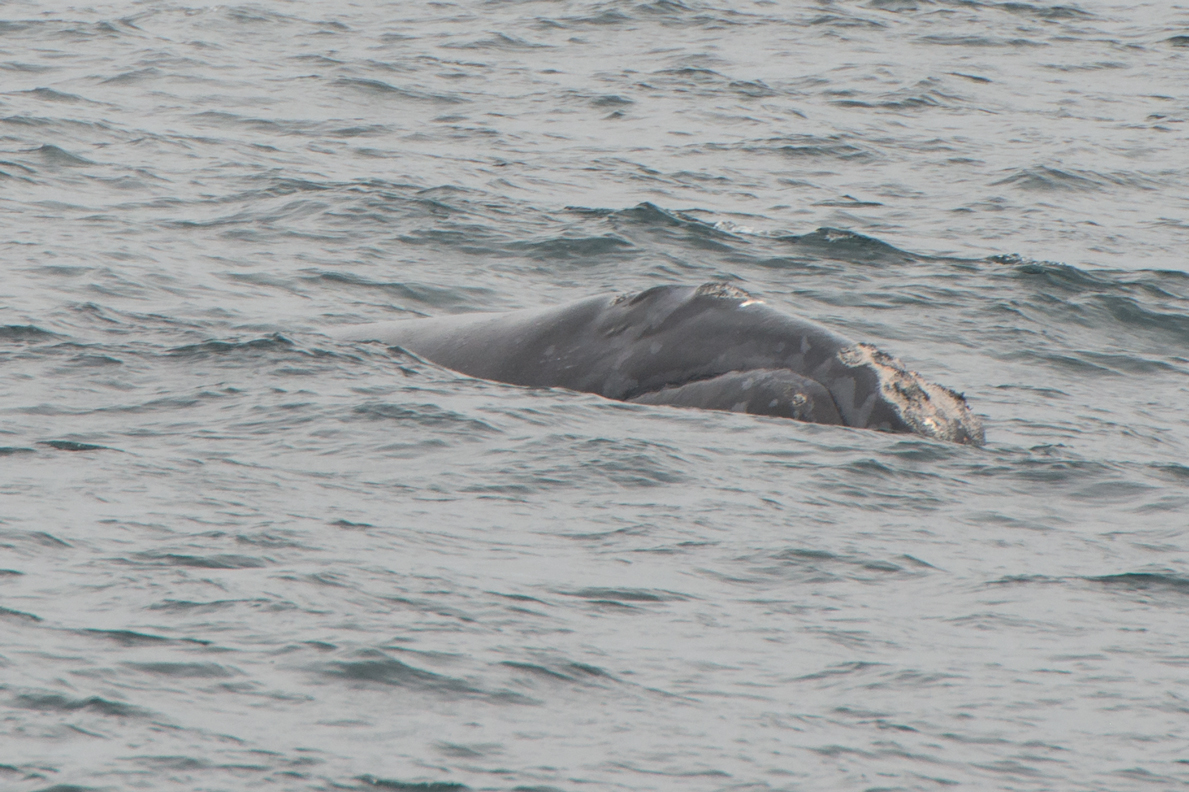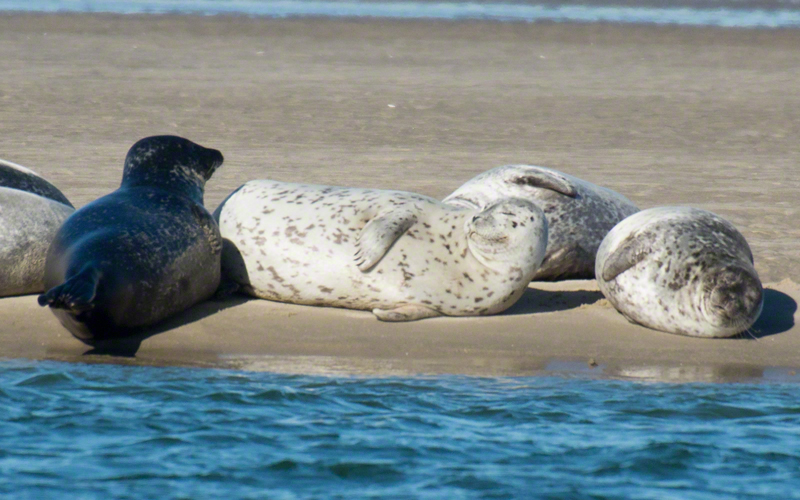North Atlantic Right Whales (Eubalaena glacialis)
Critically Endangered
By: Arthur H. Kopelman, Ph.D.
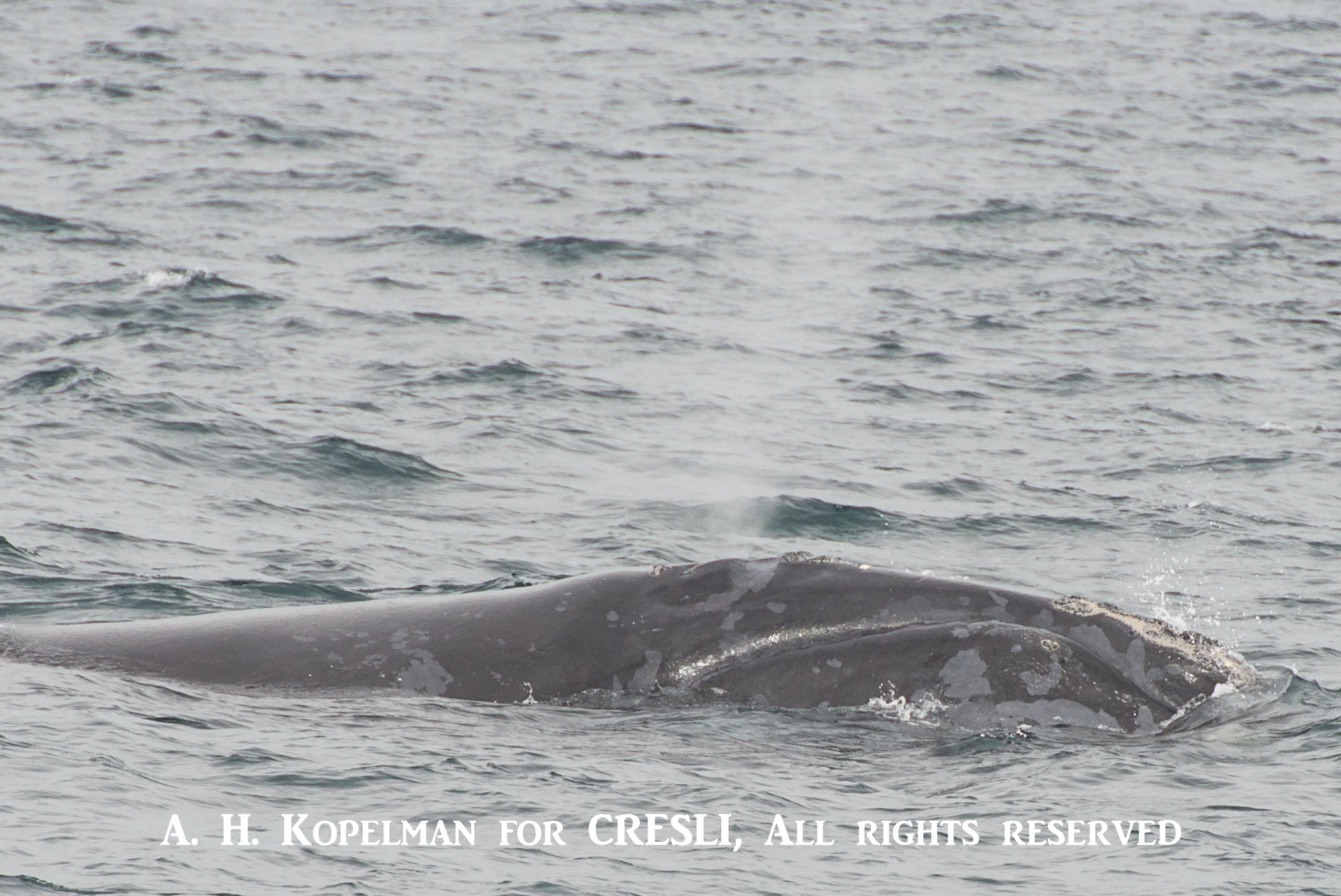
North Atlantic Right Whale (Eubalaena glacialis)
IUCN Status: Critically Endangered
The latest estimate from the North Atlantic Right Whale Consutium 2021 Report Card is that there are only about 340 (+/- 7) individuals alive today, with fewer than 70 reproductive females (https://www.narwc.org/uploads/1/1/6/6/116623219/2021report_cardfinal.pdf).
In 2020 the IUCN (International Union for the Conservation of Nature) lists the North Atlantic Right Whale as "CRITICALLY ENDANGERED."
- Critically Endangered status is given when there is an extremely high probability of extinction in the near term. See https://www.fisheries.noaa.gov/feature-story/international-union-conservation-nature-updates-classification-north-atlantic-right
The critically endangered North Atlantic Right Whale (Eubalaena glacialis) was named so because they were the "right whale" to hunt. They were the right whale to hunt for a variety of reasons, including slow swimming speed (4 knots maximum) ; floating after death; significant amounts of very long and flexible baleen; and significant amounts of blubber that could be rendered down into oil. Right whales were "protected" from legal hunting in 1935.
Studies of biopsied North Atlantic right whales indicate very little genetic variability within the population. This is assumed to be due to significant inbreeding, following the reduction of the population (population bottleneck) due to whaling. Reduced reproductive success due to inbreeding, coupled with the low reproductive rate of mysticetes in general, might partly explain the lack of recovery of Eubalaena glacialis. Recent analyses indicate that the population bottleneck might pre-date whaling (Rastogi, et al, 2004).
Right whales feed almost exclusively on small crustaceans called calanoid copepods, and hence have a very limited food niche. Right whales calve in winter off the coast of Georgia and Florida, and can sometimes be seen in the waters off New York during their migration to and from their typical feeding grounds (the Great South Channel, the Gulf of Maine, the Scotian shelf, and now the Gulf of St. Lawrence, and elswhere throughout the Western North Atlantic). Sometimes right whales can be seen in NY's waters in the summer as well.
Kraus, et al (2005) state: "Despite international protection from commercial whaling since 1935, the North Atlantic right whale (Eubalaena glacialis) remains one of the most endangered whales in the world." Protective measures instituted via the Marine Mammal Protection Act (MMPA) seemed to have worked in the early part of the 21st Century and the North Atlantic right whale population grew to and estimated population size of 440-465 individuals. However, recent mortalities and lack of reproductive success may have dire consequences for this species.
In a 2017 paper Pace, Corkeron, and Krauss state:
"North Atlantic right whales’ abundance increased at about 2.8% per annum from median point estimates of 270 individuals in 1990 to 483 in 2010, and then declined to 2015, when the final estimate was 458 individuals (95% credible intervals 444–471). The probability that the population’s trajectory post-2010 was a decline was estimated at 99.99%. Of special concern was the finding that reduced survival rates of adult females relative to adult males have produced diverging abundance trends between sexes."
The continued loss of individuals to ship strikes and entanglements, as well as climate-change induced changes in prey distribution and availability have had devastating consequences and have left North Atlantic Right Whales in an even more precarious state that before.
86%of all NARW hae been entangled at least once in their lives.
Since 2017, 36 North Atlantic right whales have been found dead, another 34 with serious injuries, and 51 others with sublethal injuries - at total of 121 (https://www.fisheries.noaa.gov/national/marine-life-distress/2017-2023-north-atlantic-right-whale-unusual-mortality-event)
North Atlantic Right Whale Unusual Mortality Event (2017-onward)
In October, 2017, NOAA Fisheries declared a North Atlantic Right Whale Unusual Mortality Event.
Counts of North Atlantic Right Whale UME Mortality, Serious Injury, and Morbidity (Sublethal Injury or Illness) Cases
(this table is copied directly from https://www.fisheries.noaa.gov/national/marine-life-distress/2017-2023-north-atlantic-right-whale-unusual-mortality-event)
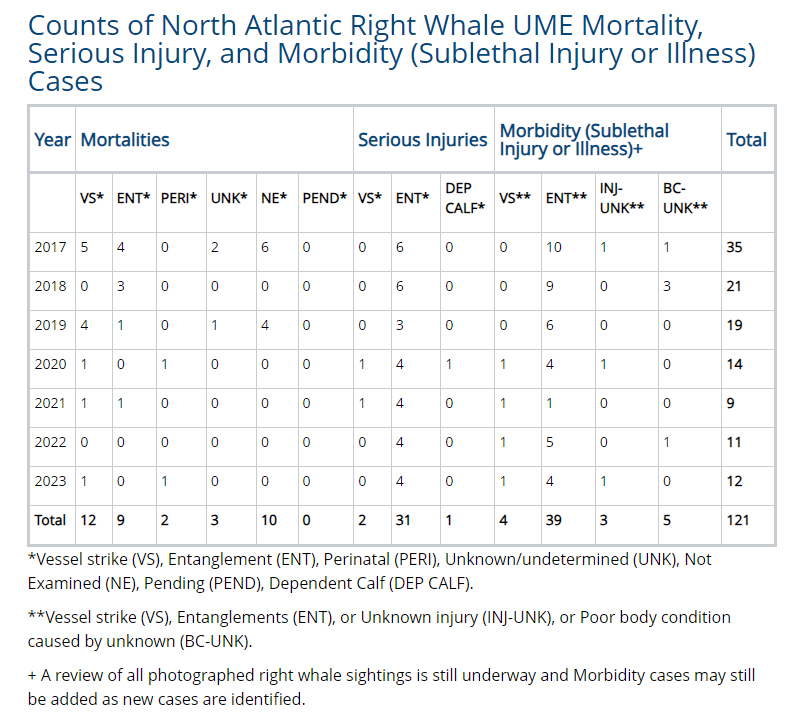
What's being done to help?
Take a look at Reducing Vessel Strikes to North Atlantic Right Whales
Listen to "Slowing Down to Save North Atlantic Right Whales" a NOAA Fisheries podcast
Interactive map (https://noaa.maps.arcgis.com/apps/webappviewer/index.html?id=e502f7daf4af43ffa9776c17c2aff3ea)
Let the authorities know - report strandings!
It is critically important to immediately report any sightings of injured or stranded whales (dead or alive). In NY, call the NY Stranding hotline 631-369-9829. Elsewhere in the In the United States, make a report by calling the Greater Atlantic Marine Mammal Stranding Hotline at (866) 755-6622 or the Southeast Marine Mammal Stranding Hotline at (877) 433-8299. You can also contact the U.S. Coast Guard on VHF Channel 16. Do not approach injured or dead animals
References cited
Kraus, Scott D., Moira W. Brown, Hal Caswell, Christopher W. Clark, Masami Fujiwara, Philip K. Hamilton, Robert D. Kenney et al. "North Atlantic right whales in crisis." Science 309, no. 5734 (2005): 561-562.
Pace, R. M. III, Corkeron, P. J., & Kraus, S. D. (2017). State-space mark-recapture estimates reveal a recent decline in abundance of North Atlantic right whales. Ecology and Evolution, https://doi.org/10.1002/ece3.3406s
Rastogi, Toolika, Moira W. Brown, Brenna A. McLeod, Timothy R. Frasier, Robert Grenier, Stephen L. Cumbaa, Jeya Nadarajah, and Bradley N. White. "Genetic analysis of 16th-century whale bones prompts a revision of the impact of Basque whaling on right and bowhead whales in the western North Atlantic." Canadian Journal of Zoology 82, no. 10 (2004): 1647-1654.
RELATED DOCUMENTS
Population size estimation of North Atlantic right whales from 1990-2022Right Whale News August 2023
RELATED SITES
2017-2023 North Atlantic Right Whale Unusual Mortality EventIUCN reclassifies NARW from Endangered to Critically Endangered
LATEST RIGHT WHALE OBSERVATIONS
North Atlantic Right Whale - NOAA Fisheries
Reducing Vessel Strikes to North Atlantic Right Whales
Whale Alert
